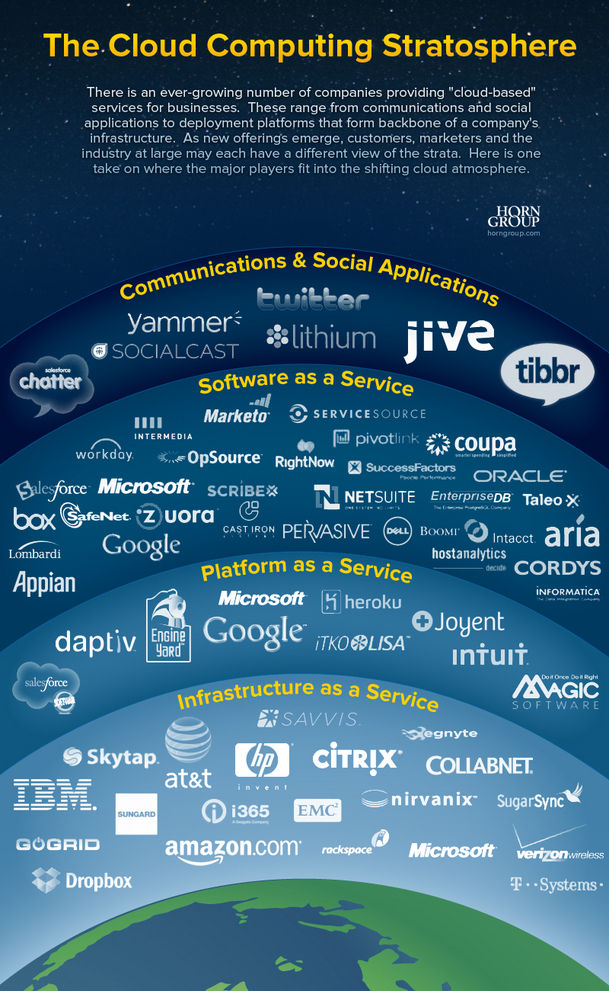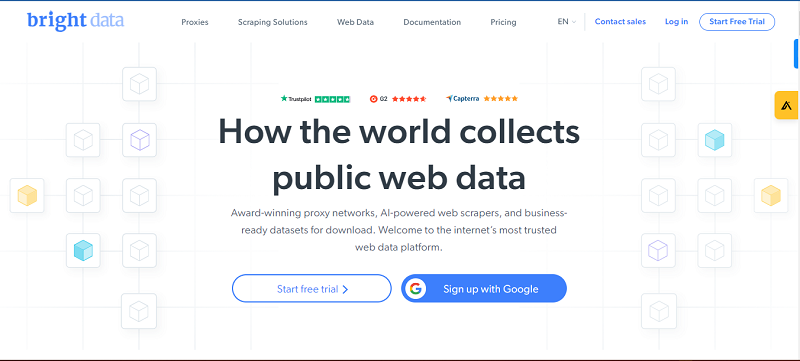Nowadays, access to reliable high-performance hardware and software resources without large capital outlays, easier access to applications and services, capability of handling large amounts of information have encouraged managers of companies to migrate to cloud computing.
Cloud computing is a service-oriented technology that use both hardware and software to provide services through a network regardless of time and location. Cloud computing consists of three different service models and a company should cover all three distinctive service models in order to adopt cloud computing. These three cloud service models are: infrastructure as a service (IaaS), platform as a service (PaaS), software as a service ( SaaS). (Infographic Source: Horn Group)

According to the National Institute of Standards and Technology (NIST), infrastructure as a service (IaaS) is : “the capability provided to the consumer to process, store, network, and access to other fundamental computing resources from cloud vendors”; platform as a service (PaaS) is: “the capability provided to the consumer to deploy onto the cloud infrastructure consumer-created or acquire applications created using programming languages and tools supported by cloud vendors”; and software as a service ( SaaS) is “the capability provided to the consumer to use software or applications from various client devices through the Internet”. Special and unique characteristics of cloud computing; such as broad network access, on-demand self-service, resource pooling, rapid elasticity for faster scalability, and measured service ; encourage companies to choose a cloud computing solution.
Cloud computing is composed of four deployment models which are Private Cloud, Community Cloud, Public Cloud, and hybrid cloud. Public cloud provides the opportunity for general public to access infrastructure and computational resources through the Internet. It is controlled and operated by a cloud provider and the services are usually accessible free or on a pay-per-use model. “The security risks and lack of negotiability of the terms of public cloud services typically will foreclose the possibility of subscribing to an off-the-shelf public cloud provider”. On the other hand, a private cloud is a deployment model that provides core technologies such as virtualization and multitenant application exclusively for a single organization. It is clear that this deployment model is less threatening than a public cloud. Most companies adopt cloud computing through a hybrid process which is a mixture of both public and private cloud services. Decision makers should understand the characteristics of public and private clouds and evaluate carefully security and privacy requirements.
Hsu and his colleagues (2014) conducted an empirical research to examine cloud computing adoption and deployment models. Their results illustrated that companies with higher levels of business concerns tend to choose private cloud over public cloud. In fact, business concerns refer to risks or problems such as data lock-in, confidentiality, insufficient service quality guarantee, bandwith bottlenecks, and reliability that a company can encounter adopting cloud computing. Therefore, The adoption of cloud computing requires a careful and in-depth examination. ICT decision makers should select their cloud models wisely and align them closely with their organization’s business model in order to deploy an effective, economical solution and to address the issues of reliability, data management, and security effectively.
By Mojgan Afshari





